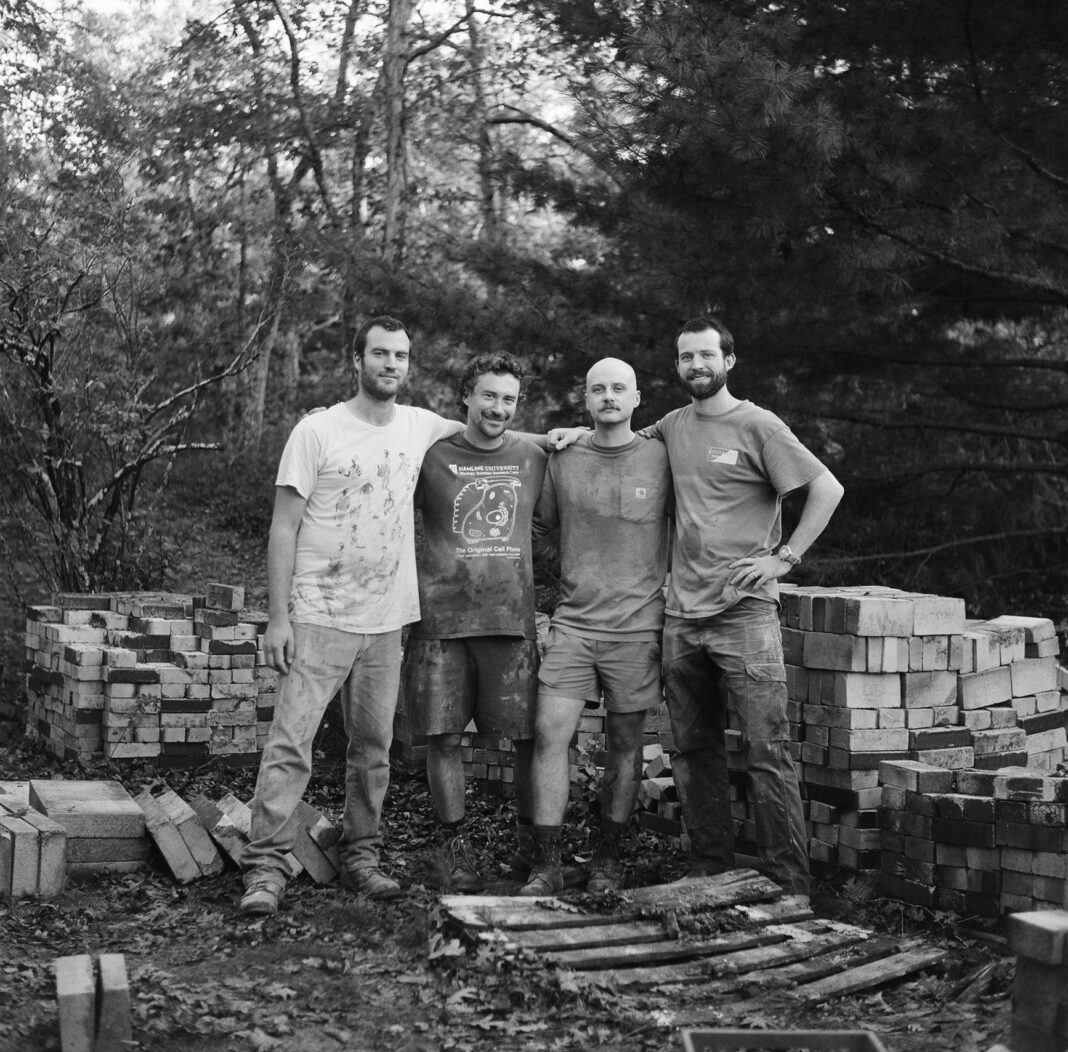In West Tisbury, a kiln bakes beautiful Merry Farm pottery, and brings a community of potters together.
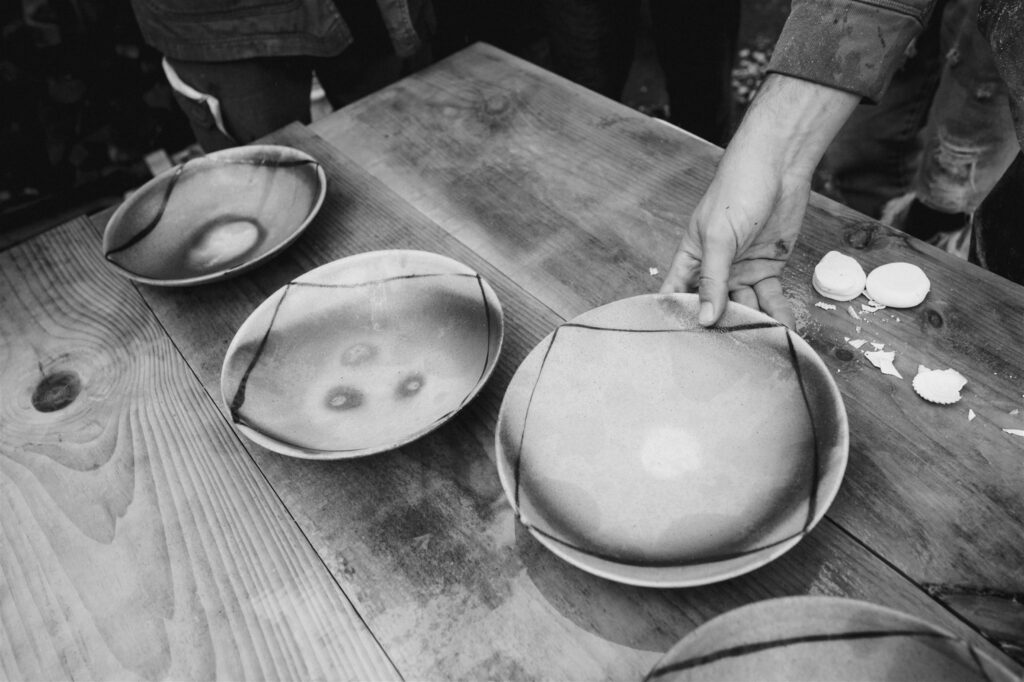
I make objects to be of both use and beauty. Each piece is formed by my hands, transformed by the fire, and completed by use.
– Micah Thanhauser
Editor’s Note: Micah Thanhauser related this story via a phone conversation with editor Jamie Kageleiry.
I started wanting to do pottery at the high school here, and I’ve pretty much stayed with it. Scott Campbell was the crafts and sculpture teacher at MVRHS. He’d have a wood-firing of our pottery at the end of the year. As an adult, I can see that firing a wood kiln is an insane thing to pull off with fully functioning adults, never mind teens.
Eric and Gilan are friends from North Carolina, where I did an apprenticeship after college. They came to help with the kiln; Gordon Moore, who went to the high school here, went to RISD, got hooked on clay, then came back to the Island and worked for me for two years. He lives and works in Brooklyn now but came back to help.
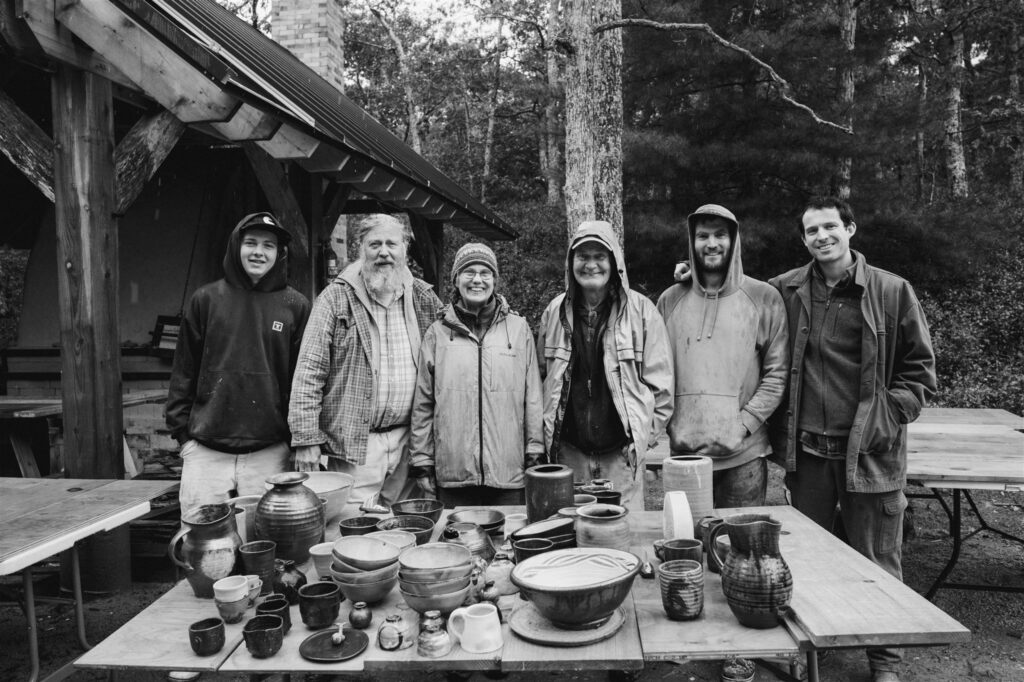
Before we moved back to MV from North Carolina six years ago, there was another potter changing up his business and he had to take down his big wood kiln. I helped him take down the kiln and we split up the bricks. So I had all these bricks. That’s always the thing with a wood-fired kiln — getting the bricks. They’re expensive to buy, heavy.
I had a tractor trailer full of bricks shipped to the Vineyard. They sat in my yard for five years. I was trying to get my business up and running; I have a gas-fired kiln that works well. I was busy, had two kids, had a lot going on. Finally things opened up enough that I could think about doing it a year ago.
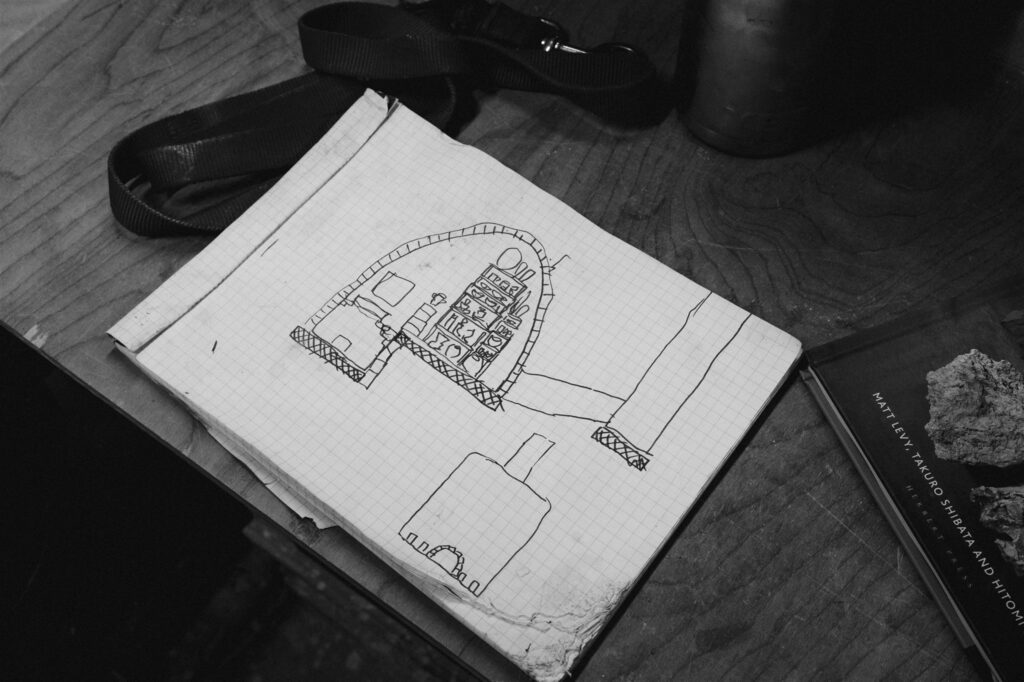
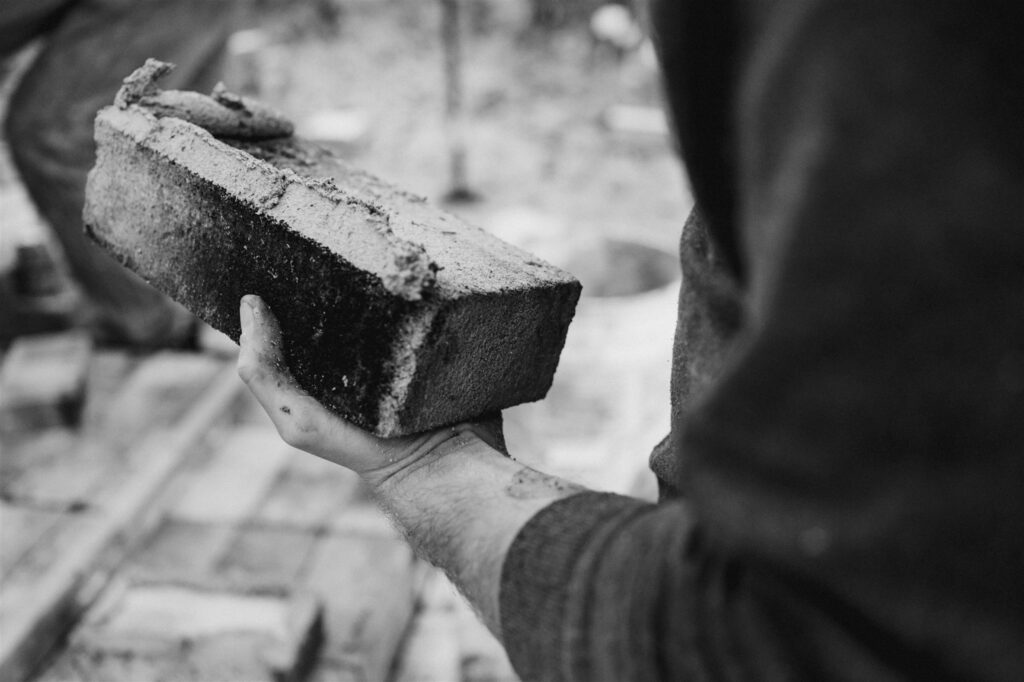

A potter I knew from North Carolina had built a number of kilns. He’s a smart thinker about kilns and he helped me with the drawings. I counted the bricks I had, the sizes and shapes, and we designed the kiln around that. Throughout history, kilns have usually been built by potters. They’re not pro’s. But it’s not rocket science: If the kiln is this big, the chimney has to be this tall — that sort of thing.
So we worked on and off for a year, then there was an intensive two weeks with a lot of help; that’s when all the photos are from.
The plywood is a temporary form, so we could lay the bricks onto it. You can’t build an arch into empty space. Then you remove the wood — with great stress and effort. Lots of breathholding. I had like five friends come. Getting the wood out was tricky.
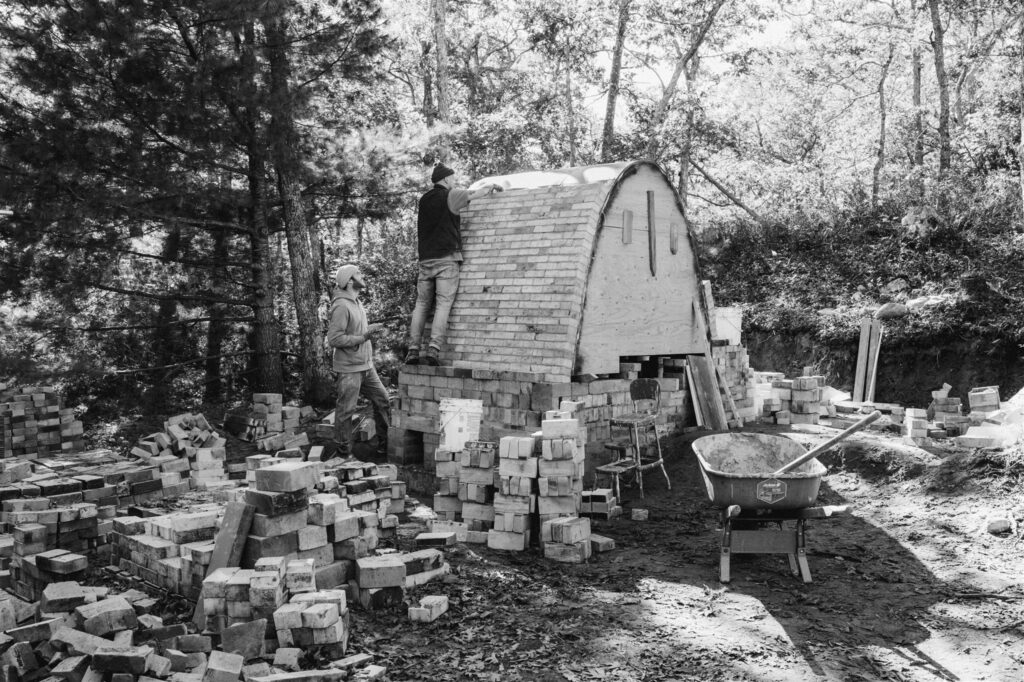
At the firing in September, we burned something like two cords, which burned for forty hours.
The primary control is how much wood you’re putting in, how often. We’d put in two sticks every five minutes, then we’d say lets try three sticks every four minutes.
There are aesthetic factors in firing: The longer you fire each piece, the more effects you can use.

You control the amount of air coming in by opening air inlets; there’s a damper.
There are signs — you can watch the fire and see if there’s a bunch of smoke. That’s too much wood. The fire’s quiet means not enough wood.
It’s very much a skilled task. It’s really good to have people around.
The potters who were firing the kiln made some little sculptures as they sat around the fire. And we had some neighbor kids come and hang out and make some little pieces.
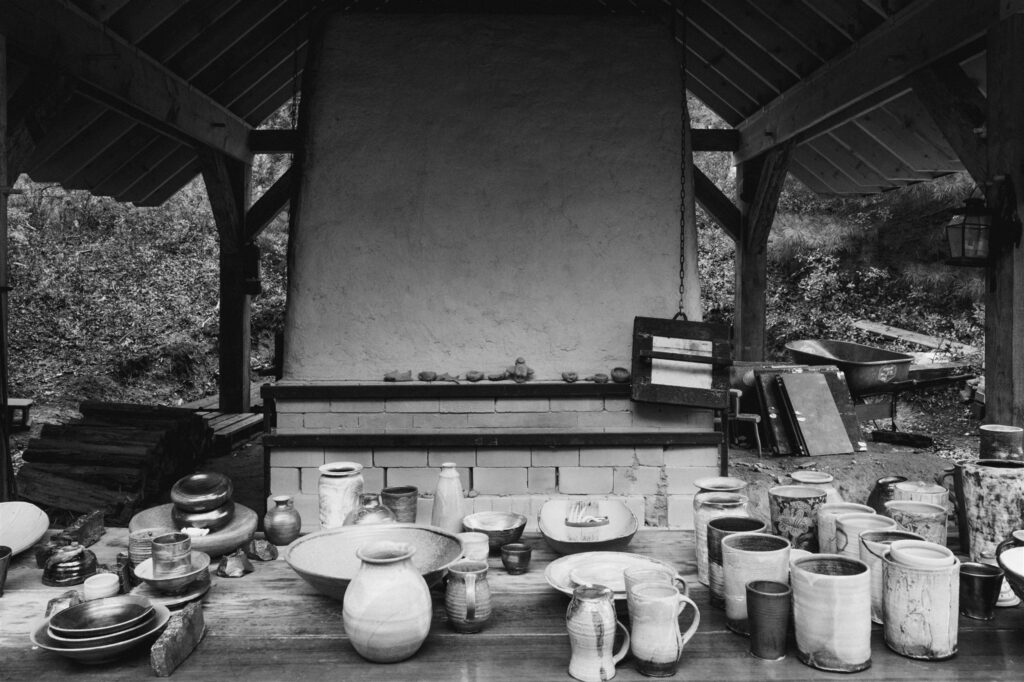
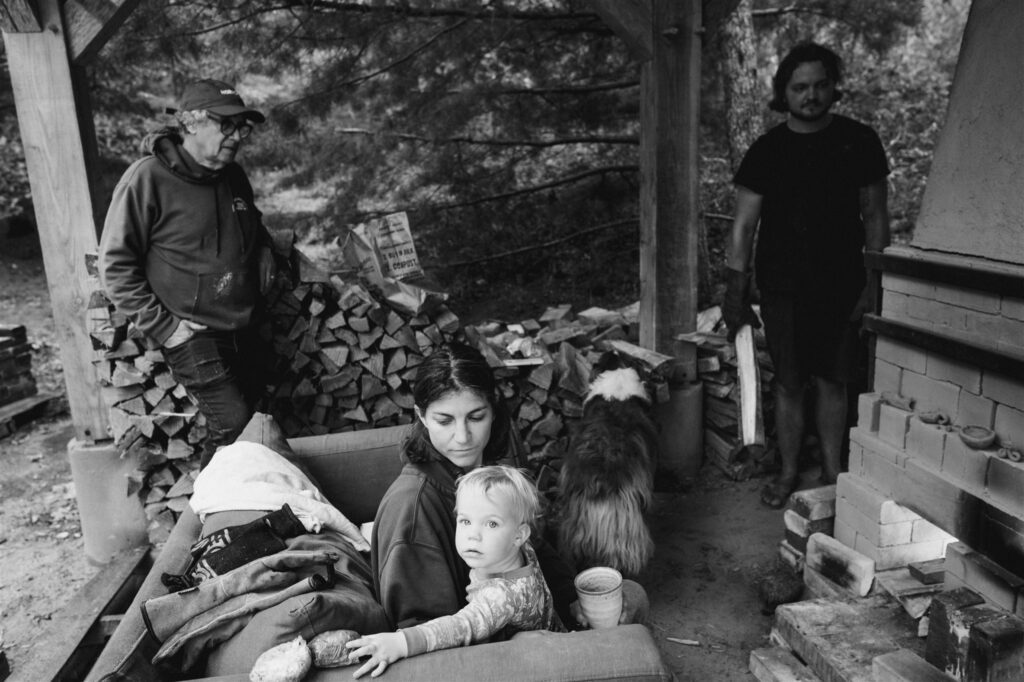
Barney Zeitz is a neighbor and an artist and he was interested in seeing what this was all about. He is a big fan of ambitious, impractical undertakings. He loved this. It’s so much work. He said “You don’t have to do any of this, you could just not do this.” But we did it anyway. He came over and said “This is so dumb, I do dumb stuff all the time but this is even dumber.” He was proud — he liked the whole vibe.
He had a Rumi poem:“Start a huge, foolish project, like Noah…it makes absolutely no difference what people think of you.”
He was a big cheerleader for the whole thing. The metal support structure around the kiln, he gave me that metal, we did a trade.
The other potters in the pictures were participants in the firing. We had eight potters who put work in the kiln in exchange for helping out with the firing. A big reason for having this kiln is to bring people together. No one can do this alone — it’s too much work. So I made it bigger than I need so there would be space for other potters to put some work in.
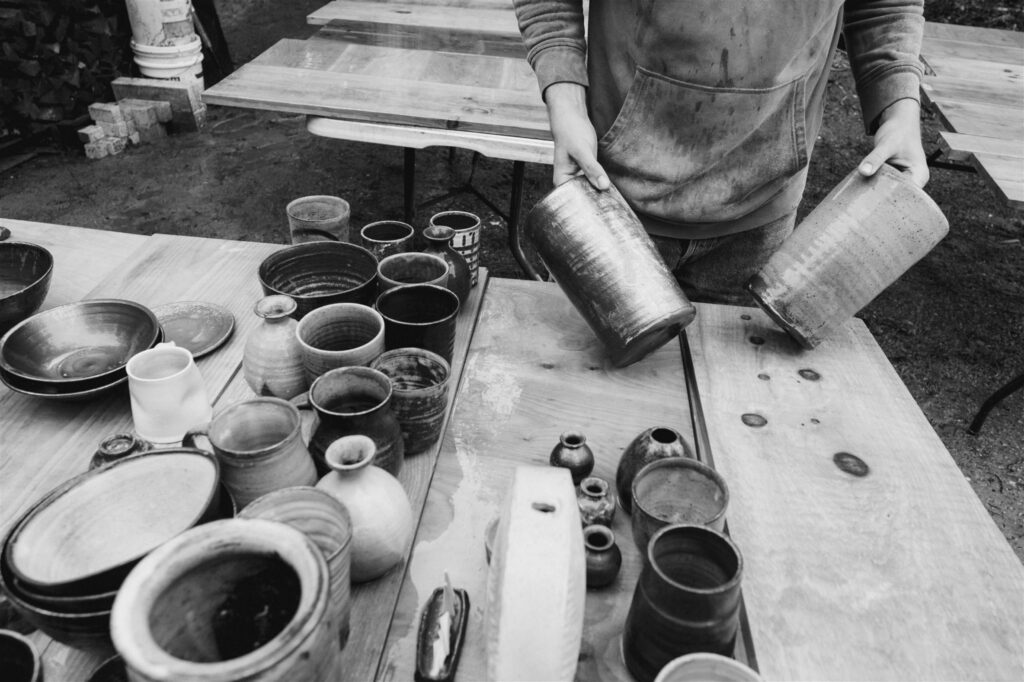
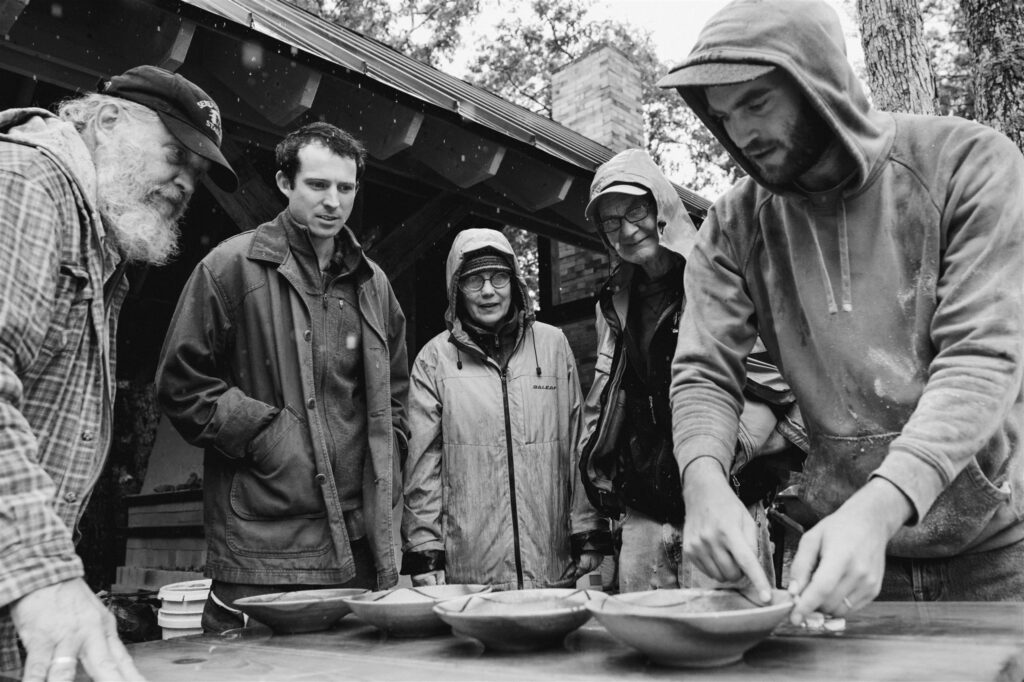
They brought their work over, then everyone’s work went into the kiln at once.
There’s labor involved in firing it. It’s more than one person can do. Then space inside is so big — it takes a lot. It lends itself well to a community effort. So it works well for other people to put pottery in and help with the labor.
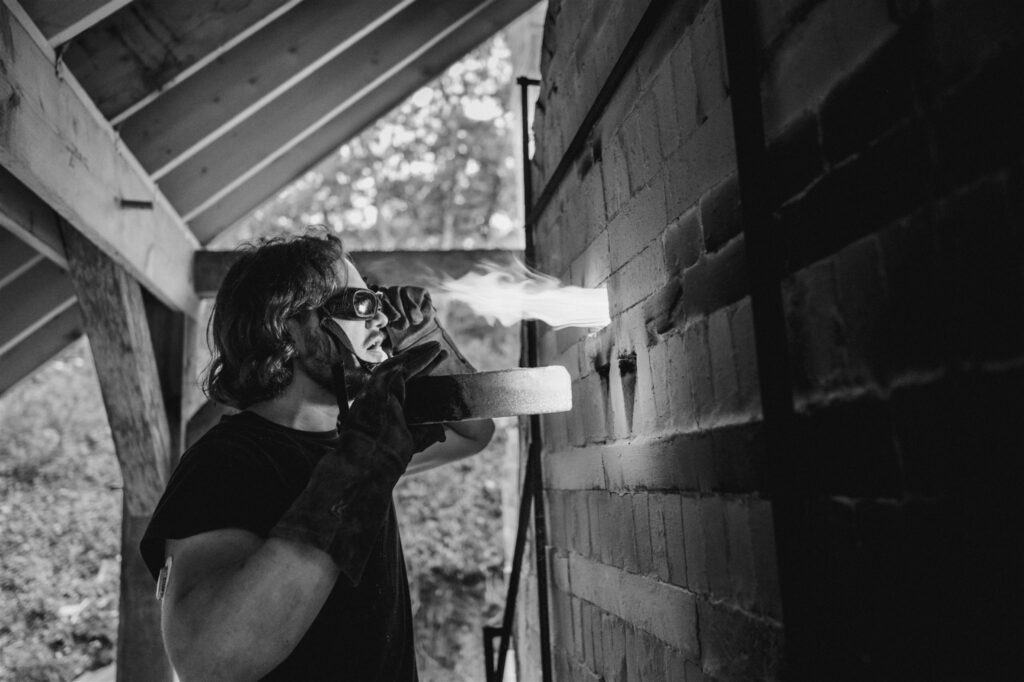
The next firing will probably be in March. It takes about two weeks to prepare the wood, load the kiln, and fire it, and I plan on firing about three times a year. It also takes about two months of full time making to make the pottery to fill the kiln. I have a smaller propane kiln that I fire more frequently, in between wood firings.
At least for me for a while, I just want whoever wants to get involved to get involved and we’ll see how it shakes out.
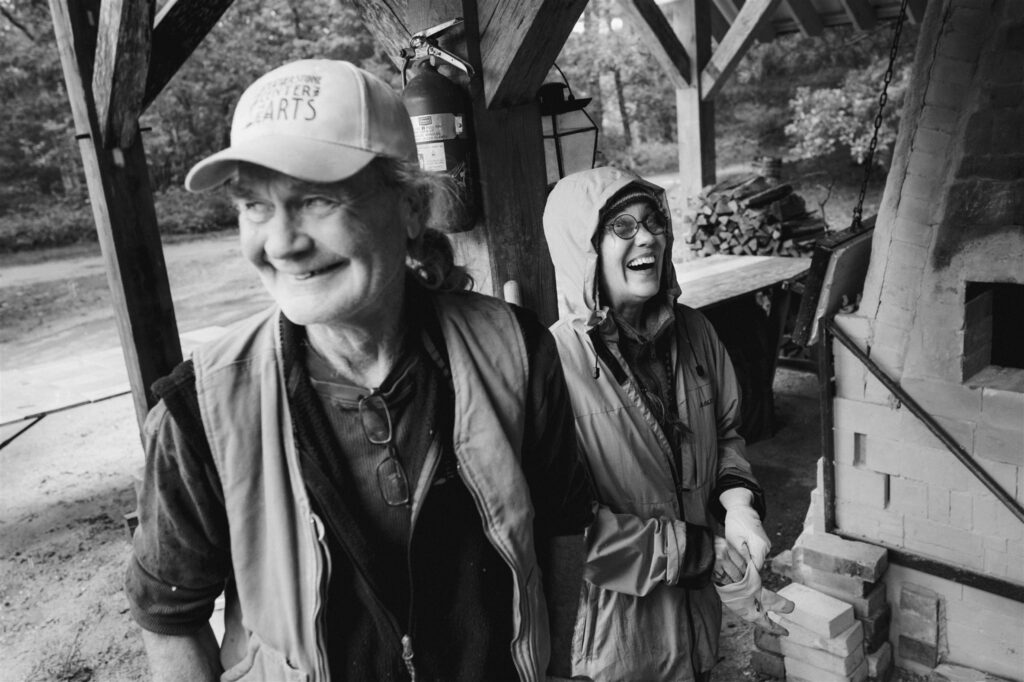
Most of the time potters are just doing their own thing; we’re in our studio making work. There’s not a lot of cause for getting together but this is one of those occasions to get together. Really good chats, really good hangs around the kiln.
Splitting wood, stoking the kiln. Some of the best times.
You can visit Micah Thanhauser’s Merry Farm Pottery studio by appointment — call or text 774-836-4349. He’s at 79 Merry Farm Road, West Tisbury; visit merryfarmpottery.com to shop online.

